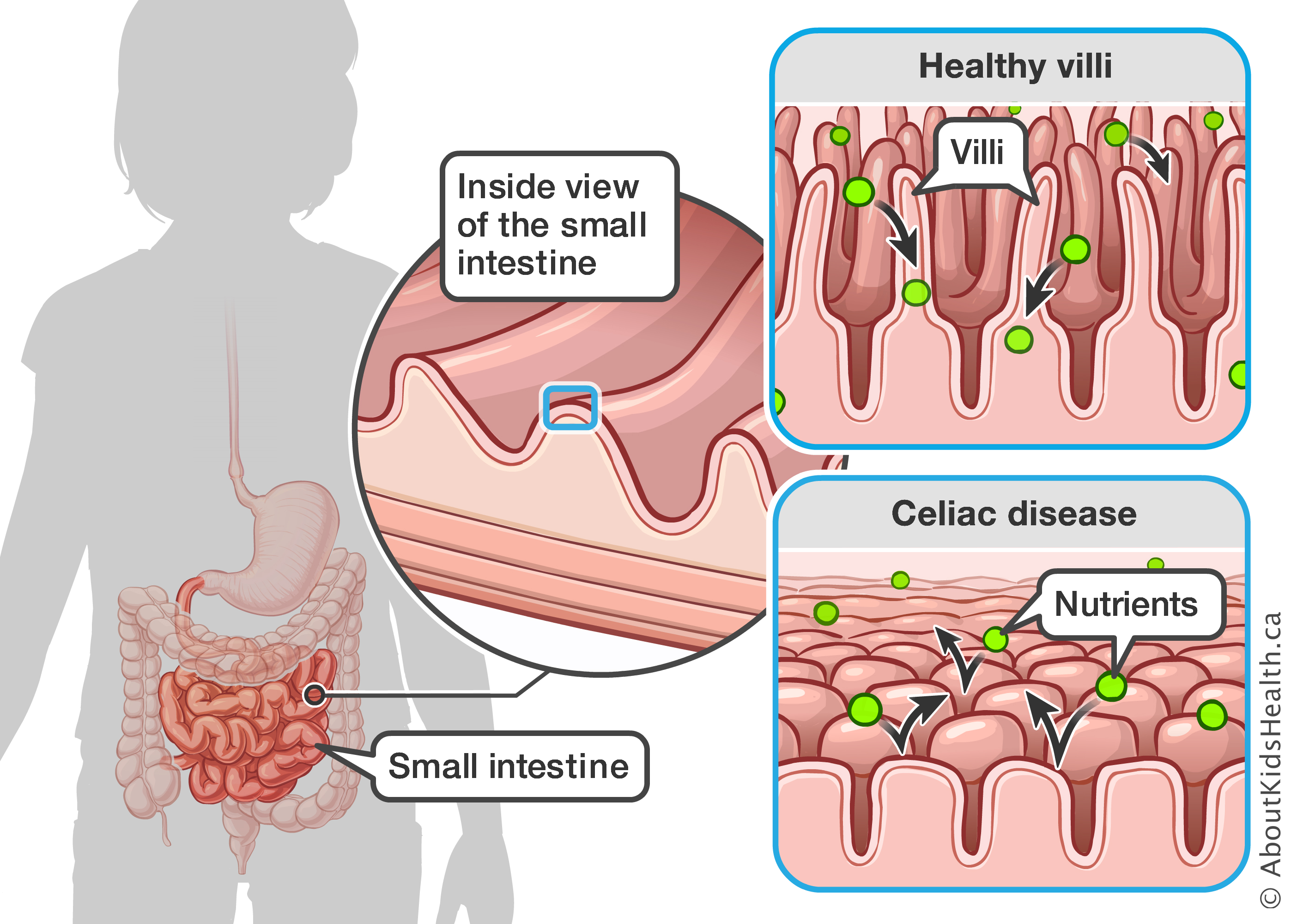Your child may eat less or refuse foods due to their celiac disease and the gluten-free diet. When starting a gluten-free diet, you may find your child refuses foods because the gluten-free options have a different taste or texture than the foods your child is used to eating. A child with celiac disease may also eat less if they have been exposed to gluten and are experiencing symptoms such as stomach pains, cramping or nausea. The following are some ways you can help your child manage reduced appetite and picky eating on the gluten-free diet.
Top 10 tips for managing picky eating and reduced appetite on the gluten-free diet
- Eat meals as a family and model positive eating behaviours in a positive eating environment. Eating as a family, away from distractions, is a great bonding experience. Not only do you as a parent get to learn more about your child’s day but it is also an opportunity for your child to learn from you. When talking about your food, try to describe the physical properties (e.g., crunchy or soft) instead of using subjective words (e.g., yummy or yucky). Be a positive role model by modelling healthy eating behaviours and table manners.
- Eat meals at regular and consistent times. Providing your child with regular and consistent mealtimes helps build their sense of security as they can expect when meals will be served. Let your child know a meal will be served about 10 to 15 minutes beforehand so they can shift focus and settle down for their meal.
- If possible, prepare one meal for the family using a variety of healthy foods. Use naturally gluten-free foods such as vegetables and fruits, legumes and lentils, poultry, fish or meat, and gluten-free whole grains such as quinoa or brown rice to prepare a meal the whole family will enjoy. Making a different, gluten-free meal for your child may make them feel left out and different. Be considerate of what your child may enjoy but do not make special meals for them based on the foods only they prefer. It is your role to decide what foods to serve, and it is your child’s job to decide if they are going to eat and how much they will eat.
- Check your child’s seat position at mealtime. Seating position can play an important role in enjoying a meal. To reduce the risk of choking and to make sure your child is comfortable while they eat, make sure your child sits close to the table and has proper trunk, back and foot support. Use highchairs or booster seats if necessary to make sure your child is sitting with their hips, knees and ankles all bent at 90 degrees.
- Involve your child in the meal-planning process by taking them grocery shopping or asking them to help you make a meal or bake a gluten-free dessert. Involving your child in the meal-planning process can help them be more open to trying foods. Have your child participate in age-appropriate cooking activities, such as washing vegetables, measuring and pouring ingredients into a bowl or tossing salads. Allow your child to lean into their curiosity by using their different senses (e.g., touch, sound, smell, taste) to explore new foods. Exploring new food through play outside of mealtime gives your child the opportunity to interact with food without any pressure to eat. For more information, please see Involving kids in mealtime tasks.
- Try “food bridges” or “food chaining” to introduce new foods to your child. Once your child has accepted a food, try introducing them to another food or a “chain of foods” that have similar colour, flavour and texture. For example, if your child enjoys gluten-free chicken nuggets, try giving them gluten-free chicken strips, then homemade gluten-free baked chicken breasts with an almond-flour crust. Remember, small changes can make a big difference over time.
- Pair foods. Pair a food you know your child likes with a new food at meal or snack times. Try offering the new food in different shapes or using different cooking techniques (e.g., raw, steamed, boiled, baked, roasted). It can take many tries before a child accepts a new food.
- Have open conversations with your child about their food likes and dislikes. Following a strict gluten-free diet with new foods, tastes and textures can be tough for your child. Talk with your child about the gluten-free foods they like and do not like. Ask them what it is about the gluten-free foods they do not like. Try to find another brand or cooking method to help your child accept the new foods.
- Avoid pressure, praise, rewards, tricks or punishment at mealtime. Allow your child to decide if or how much they will eat. If other caregivers such as grandparents or a babysitter prepare meals for your child, encourage them to follow the division of responsibility as well (i.e., they decide what food to serve and when, and your child decides if and how much to eat).
- Put the food away when your child says they are done and let them leave the table. Trust that your child knows when they are full. Offer food again at the next scheduled meal or snack time. If your child asks for food after a meal, remind them that the kitchen is closed until the next scheduled meal or snack.
For more information about managing food likes, dislikes and reduced appetite, please see How to help your child overcome picky eating.
Looking for more support?
If you are looking for more support with picky eating, consider speaking to an occupational therapist, speech language pathologist or dietitian who supports children with feeding difficulties. There may be services at your local children’s treatment centre as well as private therapy options in your area. You can also visit the Dietitians of Canada website to search for paediatric dietitians in your area who specialize in picky eating.

